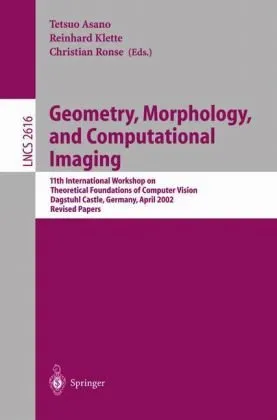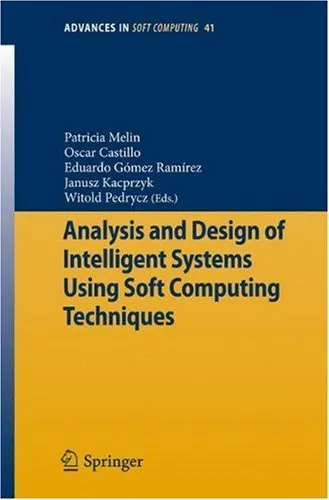Geometry, Morphology, and Computational Imaging: 11th International Workshop on Theoretical Foundations of Computer Vision Dagstuhl Castle, Germany, April 7–12, 2002 Revised Papers
4.3
Reviews from our users

You Can Ask your questions from this book's AI after Login
Each download or ask from book AI costs 2 points. To earn more free points, please visit the Points Guide Page and complete some valuable actions.Related Refrences:
Introduction to "Geometry, Morphology, and Computational Imaging"
Welcome to the fascinating world of computer vision, a field that lies at the intersection of computer science, geometry, and computational imaging. "Geometry, Morphology, and Computational Imaging: 11th International Workshop on Theoretical Foundations of Computer Vision" delves deep into the theoretical underpinnings of this multifaceted domain. This book is a compilation of revised papers from the 11th International Workshop on Theoretical Foundations of Computer Vision, held at the picturesque Dagstuhl Castle in Germany.
The book serves as a crucial resource for researchers, computer scientists, and anyone interested in the theoretical challenges posed by computer vision. With contributions from preeminent scholars, the book addresses key issues and presents groundbreaking research that continues to influence the field.
Detailed Summary
This book comprises a curated collection of papers presented during an iconic workshop focused on theoretical insights into computer vision. The workshop fostered a collaborative environment that encouraged intellectual exchange and provided a forum for researchers to present innovative ideas and methodologies.
Topics in this volume cover a breadth of interests, including but not limited to geometry, image morphology, and computational imaging. Key discussions revolve around the mathematical models that support the understanding and advancement of computer vision technologies. By exploring spatial relationships and transformations, the contributors present ways in which geometry and morphology play a vital role in image analysis.
The inclusion of practical algorithmic solutions further enhances the book’s utility, bridging the gap between theoretical constructs and real-world applications. Some papers translate complex ideas into algorithms capable of processing and understanding images, revealing patterns, and making sense of visual data.
Key Takeaways
- Comprehensive insights into the theoretical aspects of computer vision.
- The role of geometry and morphology in understanding visual patterns and structures.
- Cutting-edge methodologies for improving computational imaging techniques.
- Enhanced understanding of image transformations and spatial relations.
- The collaboration between mathematical theory and practical applications in computer vision.
Famous Quotes from the Book
"Understanding the geometry of an image is akin to deciphering the language of the visual world."
"Morphology offers a window into the soul of images, uncovering the hidden structures within."
"In computational imaging, the blend of theory and application is not just beneficial—it is essential."
Why This Book Matters
This book is a crucial addition to the literature of computer vision for several reasons. First, it captures the essence of a workshop that brought together some of the brightest minds in the field, ensuring that the discussions and insights shared remain accessible to a broader audience. Second, it highlights the importance of theoretical foundations in pushing the boundaries of what is possible in computer vision. The book emphasizes that to innovate in imaging technologies, one must foster a deep understanding of the underlying mathematics.
Most importantly, the book acts as a bridge between academia and industry, demonstrating how theoretical advancements can result in cutting-edge technologies with practical applications. For professionals in the field, this book provides a repository of knowledge, sparking new ideas and guiding the next steps in research and development.
In conclusion, "Geometry, Morphology, and Computational Imaging" is more than a record of a workshop—it is a catalyst for ongoing exploration and innovation in computer vision, underscoring the essential collaboration between geometric theory, morphological analysis, and computational prowess.
Free Direct Download
You Can Download this book after Login
Accessing books through legal platforms and public libraries not only supports the rights of authors and publishers but also contributes to the sustainability of reading culture. Before downloading, please take a moment to consider these options.
Find this book on other platforms:
WorldCat helps you find books in libraries worldwide.
See ratings, reviews, and discussions on Goodreads.
Find and buy rare or used books on AbeBooks.
1208
بازدید4.3
امتیاز50
نظر98%
رضایتReviews:
4.3
Based on 0 users review
"کیفیت چاپ عالی بود، خیلی راضیام"



